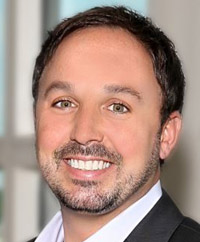How To Bring Patients To The Table…And Use Their Feedback

By Ed Miseta, Chief Editor, Clinical Leader

As the Director of Global Oncology Patient Advocacy & Professional Relations for Boehringer Ingelheim (BI), one of William Tunno’s primary responsibilities is bringing the patient voice into the company. But when discussing the topic of patient centricity, he is quick to note it is not just the patient voice he is trying to bring into BI. The company is taking a thorough look at how it is interacting with all stakeholders, including patients, professional associations, and patient advocacy groups as well.
Tunno acknowledges providing patients with a seat at the table will be a difficult endeavor for many companies. He still believes one of the main issues will be around legal and compliance concerns. “Companies are talking about bringing patients and patient advocacy groups into an organization to share highly confidential information about protocols, pipelines, and things you would not normally share with the general public,” he says. “That is a huge shift for our industry, and I think there is reason to be concerned since many of these patients are also bloggers. Pharma needs to work with them, but at the same time we have to understand their potential to share information with the public. I believe it is a large concern for all pharma companies.”
 Tunno was able to bring a different perspective with him when he joined the company. BI already had a good patient advocacy infrastructure in place, but was still trying to figure out how to best facilitate those patient interactions. He believes one new trend companies are still trying to figure out is how to engage with patients earlier on in the development life cycle and more frequently.
Tunno was able to bring a different perspective with him when he joined the company. BI already had a good patient advocacy infrastructure in place, but was still trying to figure out how to best facilitate those patient interactions. He believes one new trend companies are still trying to figure out is how to engage with patients earlier on in the development life cycle and more frequently.
“Throughout my career I have been helping to bring in patients and patient advocacy groups, but also professional associations and researchers,” he says. “All of these individuals and groups share their insights and inform on what we can do, or be doing better. My role is to help bridge the gap between all of those groups. For example, understanding what advocacy groups can do in the organization to help patients participating in clinical trials, and the different steps we can take to better engage them and educate them on what we hope to do.”
Tunno notes the pharma industry, for much of its history, has been focused on physicians. In the past, physicians have always been the main decision-maker on medicines and trials. But as patients steadily become more educated consumers, they are doing more to take control of their own health. That is also empowering them to make more decisions. “There is a big shift that is occurring here and pharma companies really need to understand that,” he says. “That means understanding how we are going to truly infuse that patient voice throughout the organization.”
Don’t Assume You Know
There is a problem that Tunno believes exists between pharma and patients. For the most part, many departments rarely speak to patients, if they do at all. And, although they don’t know patient concerns very well, they tend to think that they do.
“I realized many people in pharma had probably never been to a patient meeting before, or heard about how debilitating a disease might be. I think that makes it difficult for them to relate to it. I’m sure many of them never took a minute to ask themselves what they would want for a parent or spouse who might have the disease. Since they spend most of their time sitting in an office, it’s something they generally do not need to think about.”
As a result of these concerns, many organizations have begun to host large, roundtable discussions. The goal is to get input from outside stakeholders that would help ensure organizations are not missing out on anything when preparing for clinical trials.
The roundtable discussions could include senior executives, academic partners, patient advocacy groups, professional associations, and of course the patients themselves. The goal is to better understand the disease, what the patients thought about it, and what factors were most important to them. In the interest of full transparency, Tunno believes it is also a good practice to share your company’s views on the disease and your vision for the clinical trial.
More Info And Fewer Models
Oftentimes a new medicine does not cure a patient of a disease. It might just prolong their life or make them feel better. One of the first things Tunno learned from the roundtables is that it’s important to help patients understand what exactly a new medicine will do for them.
Companies are now attempting to help with that issue. For example, a professor from the Mayo Clinic has developed an assessment form. By sitting down with patients, he was able to find out what really matters to them. Patients were essentially asked, “If we are not able to cure your disease, what are your current symptoms that you would most want us to improve?” That information had been incorporated into the clinical trials and ultimately FDA product labeling.
At a roundtable session, Tunno also learned patients do not enjoy seeing models in ads. “They told us they hate seeing beautiful models in ads,” he says. “They felt it was ridiculous and wanted to know why we didn’t use real patients.” If you look at materials he has since developed, those materials contain patients who have actually worked with him on a trial.
To pull off that request Tunno had to get the patients, researchers, and legal involved. He notes it was great to work with these patients to get them into the ads and be able to have them share their stories.
“Working with them in this manner was very personal and we received great feedback from them,” he states. “Why pay models to portray patients when you can bring in the patients themselves? It was something we learned from the clinical side that we were able to take to our commercial group and use to improve the overall patient experience.”
Understand Patient Needs
Tunno believes these initial meetings have been successful for both sponsors and patients, and many companies and now conducting similar round table discussions. He believes this trend will continue going forward. He has found they often result in insights which otherwise would never have been learned. He is also aware of at least one researcher who enjoyed the discussions so much, she opted to transfer into a patient advocacy role.
While some patient-centric efforts are one-on-one interactions, there are other benefits of having everyone together at the roundtable meetings. Tunno felt it was important for all of the key opinion leaders and community-based doctors to hear directly from patients as well as individuals from patient advocacy groups who deal with hundreds or perhaps thousands of patients.
Being in a hospital or clinical site can also be hectic and stressful, making it more likely that patient input could be missed. The roundtable discussions are much more relaxed for those in attendance. In those meetings physicians can focus all of their attention on what patients are saying, and leave all other concerns behind. Then, when they get back to their clinics and patients, they have a better understanding of what they should be looking at, the thought process that went into it, and what their patients need them to do.
“Doctors know a lot, but it is not possible for them to know everything,” he says. “Understanding the needs and problems of every patient in every disease is not easy, especially when you have a hundred other issues to deal with every day. They listen to patients and think they understand them, but there are always little things that you can miss or that patients don’t always disclose. I have had several physicians and academics thank us for including them in these meetings, because they learn many things that they were maybe too busy to notice or think about.”
Incorporate Diversity
A final concern for Tunno is including patients of every race, ethnicity, and country in patient centricity discussions. This is of increasing concern to companies, especially those that are global and conducting trials around the world.
“There are a lot of global oncology meetings, such as the American Society for Clinical Oncology (ASCO),” he says. “Companies are using these meetings to reach out to key sites and patient groups in all of the countries where trials are performed. They are asking whether anyone will be attending the meetings. If so, efforts are made to conduct patient roundtables at those events as well. Those meetings could be attended by up to 80 individuals, including senior leaders, all taking part in the discussion. Participants are asked what they are hearing, what has changed, and what they are doing about it.”
Many companies are already extending their patient centric efforts to other therapeutic areas and are attempting to engage patients throughout the entire development process. Tunno is pleased to see so many companies becoming fully committed to their patient centric efforts.
“Large organizations can be complicated, so we realize this is going to take some time,” he says. “With companies now being geographically dispersed, that also makes this effort a bit more challenging. But we also know that if we don’t figure this out, some other company will. Pharma companies really need to ask themselves where they want to be in 20 years. Do they want to be a player in the industry or do they want to be obsolete. Properly engaging patients is really that important.”
